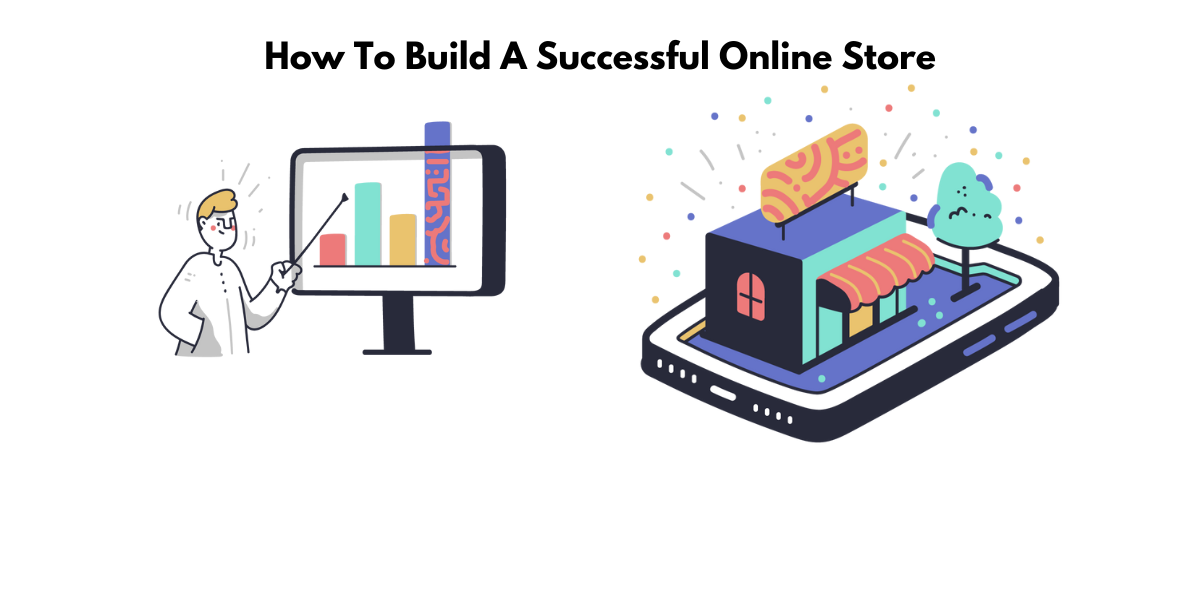How to Build A Successful and Competitive Ecommerce Website
How to Build An Ecommerce Website Online
Building an ecommerce website from scratch can be a daunting task, but with the right tools and advice, it can be a breeze. In this article, we will walk you through the basics of how to set up your online store.
First, you must make sure that your website is public and ready to sell before creating an account. Make sure to take your time and weigh the pros and cons before making any final payments. Once you have set up your account, WooCommerce web hosting from Hostinger is a great way to get started. Our web hosting is secure and highly customizable, so you can ensure that your website meets all your needs. Finally, don’t forget about security! Use strong passwords and protect your site with an SSL certificate.
So, you want to start an ecommerce website? Great! This guide will show you how to get started quickly and easily. We’ll provide step-by-step instructions on how to set up your website, including how to get a free plan on SSL certificate and domain name. We’ll also show you how to build your site, promote it, and start selling products and services.
What is required to build an aesthetically pleasing and high-performing ecommerce website?
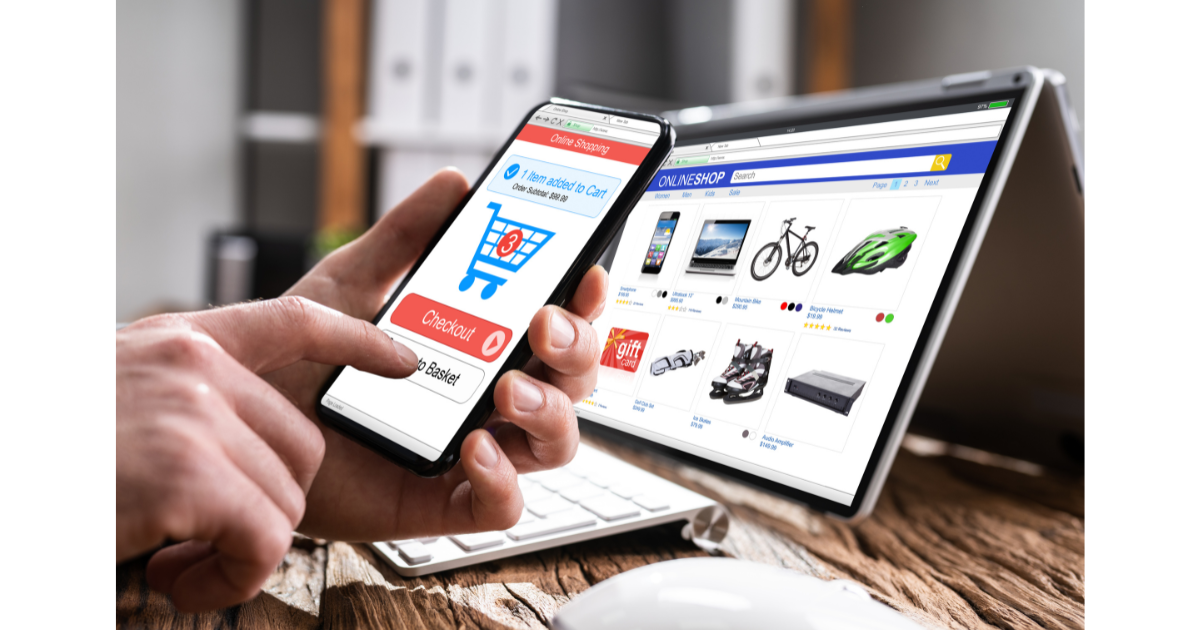
Creating a high-performing ecommerce website requires brands to focus on the following areas when designing their site’s layout. These aspects include content, UX, design, and conversion rate optimization.
When it comes to creating an ecommerce website, there are a few different options you can choose from. The first option is to use a Software as a Service (SaaS) platform. This platform offers more customization for your website but doesn’t offer as many features as some of the other options. The second option is to create an open-source platform from scratch. This requires more time and effort, but you will have more control over the result. The third option is to use an ecommerce platform that you like, as long as it is intuitive and versatile. Finally, you can choose between headless commerce and open-source platforms such as Magento or Woo Commerce.
There are no limitations to what you can design with the offline website builder software of your choice. However, to have an aesthetically pleasing and high-performing website, there are a few things you need to look for in your store builder. The first is that the store builder must be easy to use. This means that it should be intuitive and simple enough for anyone to navigate without referring to a manual or tutorial. Secondly, the store builder must be able to produce responsive websites that will look great on any device. Finally, the store builder should be able to integrate with various payment gateways and shipping providers. The only way to ensure that the best website builder meets these requirements is to test it first.
Mobile responsive
A responsive website adjusts its layout to fit the device it is viewed on. This can be a desktop computer, laptop, tablet, or phone. No matter the screen size, the visitor will see all the content in an easily readable format. Having a mobile-responsive website is important because:
1) More people are using mobile devices to access the internet than ever before. Statista reports that as of January 2018, 52% of all global web traffic comes from mobile devices! That number will only continue increasing as more people adopt smartphones and other mobile devices.
2) Google Map has been prioritizing mobile-friendly websites for some time now. If your site isn’t responsive, it may not appear as high on search engine results pages (SERPs). Google Sites announced in April 2015 that it would start penalizing websites that were not optimized for mobile browsing!
3) A responsive design ensures that your personal website looks great no matter what device it’s being viewed on. This is important because you don’t want potential customers to leave your site simply because it doesn’t look good on their phone or tablet.
Customization opportunities
BigCommerce is an open-SaaS platform that offers custom integrations through APIs. This means that it can be integrated within larger technical ecosystems, providing you with the flexibility to use the technology stack that best suits your needs. BigCommerce also allows you to use your development languages and tools, giving you more control over how your store looks and works.
In addition, Bigcommerce provides a range of design services through Folio3, helping stores come to life with beautiful and high-performing websites.
Easy-to-follow site navigation
Building a website can be easy when you use a company that offers easy-to-follow site navigation. Their main menu should highlight your product categories, and the footer or top bar can be used for navigation, but the blog posts can also be placed on the main menu or sidebar menus. Additionally, their process is simple, with a free plan on wireframe tool to help clients build out their content.
Unique user experience
User experience (UX) drives consumers to continue their purchases on a website. The best marketing tools are useless if the site is not intuitive and easy to navigate. A high-performing ecommerce website must have an excellent user experience to achieve higher conversions, repeat purchases, rave reviews, and word-of-mouth recommendations. The best platform for website building an aesthetically pleasing and high-performing ecommerce website is one that has a flexible UI. The more it can be customized, the better the UX will be. To measure the website performance, ensure that you can easily add or remove design elements as your priorities change. Use a good CMS/CDN and web hosting provider to increase the speed and UX of your ecommerce website.
What makes a website user-friendly?
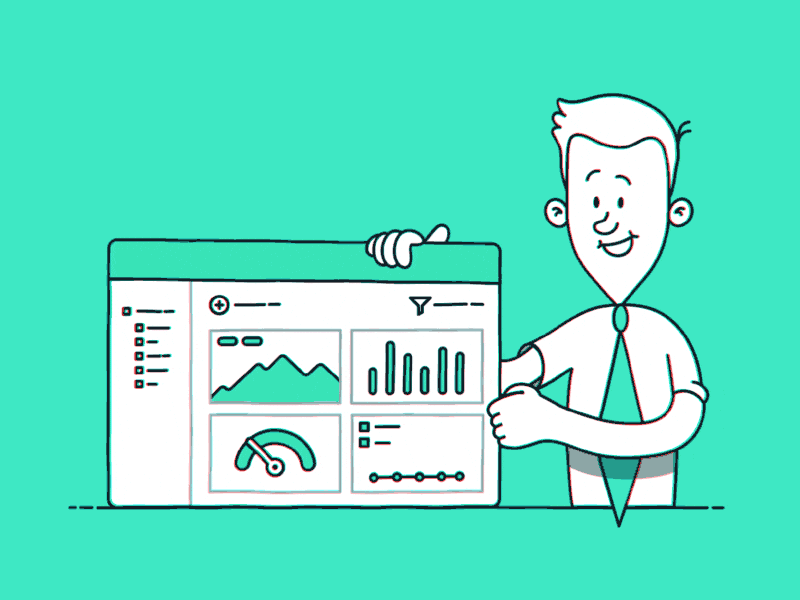
Most ecommerce websites use footer menus as the main way to navigate the website. This is because they are easy to use and provide a quick way for users to access the different areas of the store. Using the main menu at the top of the page and footer menus is common practice for highlighting your online store categories. You can also add blog posts sitewide or sidebars, with varying success and convenience levels. Amazon’s website is an example of a site that is easy to use and navigate.
Moreover, Amazon hides all product category pages in its sidebar hamburger menu. This makes it easier for users to find what they are looking for without being overwhelmed by too many choices. In addition, simplicity is key when it comes to website design. The web should be easy to browse and not overwhelm the end-user.
What kinds of sites can be created with the best website builder?
Not all websites are created equal, and choosing the right platform is important. A feature that may be helpful includes a beautiful storefront, secure online payments, and more. The best website to build an online store offers competitive rates, so choose the price point that suits a small business owner best to start selling online!
Design differences between B2C and B2B ecommerce sites
There are key design differences between B2B and B2C ecommerce sites. B2B ecommerce sites generally focus on lead generation and brand awareness rather than sales. This is because the purchase process for B2B brands is often more complicated and requires more time to decide. As a result, B2B brands require longer content that accommodates a decision-making process. Additionally, B2B design must account for the user’s intent and the purchase process necessary to support it. For example, in a business-to-business setting, the user might look for product specifications or comparisons before making a purchase decision. In contrast, the user might be looking for brand recognition and immediate purchase gratification in a business-to-consumer setting.
Though design differences between B2B and B2C ecommerce sites are apparent, both types of websites shared hosting. For example, both B2B and B2C customers are price conscious; however, purchasing on a business website is more complex for the latter. Another similarity is that both types of customers appreciate it when a company provides clear information about its products and services. In addition, while B2B websites typically have long product information pages, including a summary of capabilities and integrations, they also focus on their target audience and often have more diverse navigation.
1. Customer intent.
Regarding ecommerce, there is a big difference between how business-to-business (B2B) and business-to-consumer (B2C) customers buy products. With B2B purchases, the customer’s intent is typically driven by their business priorities. They will take the time to evaluate their options and carefully consider each product before making a purchase. The B2C purchase timeline is generally longer than the B2B purchase timeline because there are many people to please – from friends and family members to detailed lists of requirements for evaluating products.
On the other hand, B2C shoppers are more likely to act on an immediate need instead of thinking about the process from top to bottom as B2B shoppers do. This often leads them to make impulse buys or decisions based on cognitive triggers in design tactics. Another key difference between these two types of customers is that B2B readers/buyers use data-based product evaluation. In contrast, B2C buyers act on impulse and often rely on cognitive triggers in design tactics to sway purchase decisions.
2. Purchase process.
Many end-user and purchasing agents/decision-maker roles are involved in an ecommerce site for a business to meet all its needs, from content and interactive tool to supporting marketing assets. The B2B buying process is more involved than the B2C process. In a B2B setting, there are typically more people involved in the purchase decision, and they have different needs that need to be met. This can make the design of a B2B ecommerce website more complex than a B2C site.
The main goal of a B2B ecommerce website is not an immediate sale but lead generation. Therefore, it’ll be different from the “event-driven” purchasing decisions that typically happen in a B2C setting where consumers are constantly discovering and evaluating. They react quickly to good offers because they always look for something new. 46% of consumers who complete their smartphone purchase process indicate how important mobile-friendly websites are to B2C ecommerce sites. There is no time pressure when the consumer knows what they want and can find it easily; this is why urgency isn’t as important on B2C websites as on responsive ecommerce sites designed to make all devices equally great, not just those with screens. Responsive design has a more positive impact in the B2C and B2B arenas.
3. User experience.
B2C design typically focuses on user experience with the intent to create an enjoyable experience that is easy to navigate through the site. This includes ensuring all the important information is prominently placed and using clear and concise language throughout.
In contrast, B2B websites must provide different pricing options for their customers. They also cater to a wider range of customers, with multiple sizes and industry segments. As a result, much more care must be taken when designing the layout so that all-important information is easily accessible. All B2B content is targeted at “choosers” and end-users, with a need for a clear overview of integrators, capabilities, and regulatory requirements.
Ecommerce website design checklist
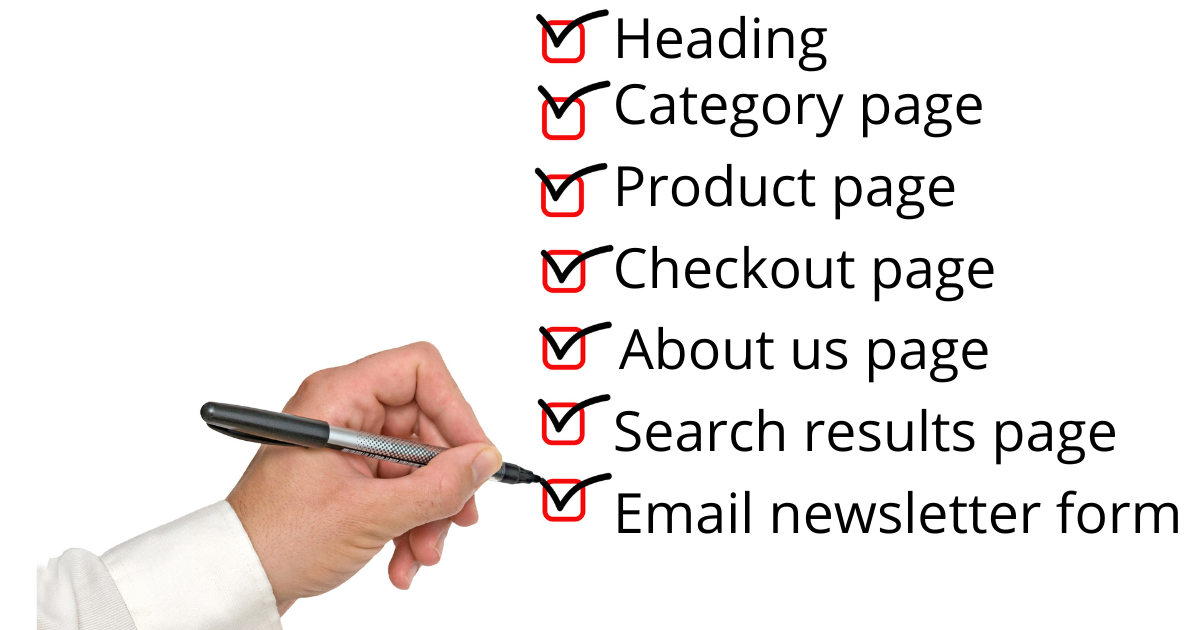
Website building for eCommerce can be a daunting task. There are many things to consider, and the process can easily derail without a clear roadmap. However, by following some simple steps, you can create a professional website that looks great and stands out from the competition. The eCommerce website needs the following: homepage, category pages, product landing pages, and checkout page. In addition, there are two types of eCommerce websites: single-page or multipage. This means that it stands out from
When designing an eCommerce website, it is important to ensure that your site stands out from the competition. However, you also need to ensure that your design follows good practices and is easy to use. Additionally, it is important to identify your target market and ensure your site is built using a user friendly website builder. This will help keep customers coming back again and again.
Homepage
Your homepage is the most important page on your website. It’s the first thing customers see, setting the tone for the rest of their visit.
There are a few things you should keep in mind when designing your homepage:
A clear set of categories: Your homepage should feature a set of clearly defined categories so that customers know where to find what they’re looking for.
Hero image or slider: A hero image or slider that showcases the main product or current offers is an effective way to capture attention and encourage customers to explore your website further.
Curated recommendations: Curated recommendations are more interesting than traditional listings and help sell products on your website.
The look of your homepage is determined by industry and customer preferences. If you’re unsure about what design will appeal to your target audience, do some research to find out what they prefer.
Consider offering a takeaway option for customers who want to order Jeni’s ice cream instead of shipping it nationwide. This will save them time and money, and it’ll be easier for them to enjoy Jeni’s delicious ice cream!
Jeni’s website is clean and simple, with well-designed typography, colors, and font sizes. The site has a minimalistic design, which is perfect for those who want to focus on the products rather than the website’s design.
Category page
When designing your ecommerce website, it’s important always to keep the customer in mind. One of the most important pages on your site is the category page. This is where customers can find what they’re looking for quickly and easily. Here are a few tips for designing an effective category page:
- Ensure that each category page has a descriptive URL optimized for SEO (search engine optimization).
- Ensure your photo quality and specs are high to maximize conversions.
- Promote your product with Buy and Save for Later buttons.
- Design a detailed product description that includes the benefits of using your products, social proof, and customer reviews.
- Include upsells and cross-sells on the product page to increase sales.
Product page
Product pages are important for ecommerce websites because they are the pages potential customers will visit to learn more about a product before deciding to buy. The design of a product page should be clean and include plenty of high-quality photos, product specs, social proof, and related products. Having a good photo is essential for conversions on product pages; studies have shown that increasing the quality of a photo on a product page by just 1% can lead to an increase in sales by up to 95%. If you’re looking to make your ecommerce website more effective, check out this checklist:
- Use high-quality images
- Include a lot of information (photos, specs, social proof)
- Make it easy for customers to buy (e.g., using filters on shop pages)
Checkout page
When designing your ecommerce website, it’s important to focus on the checkout page and ensure that customers have a positive experience. The Baymard Institute urges ecommerce websites to prevent customer abandonment by improving their checkout flow and the experience.
Your template design checklist should include “guest checkout,” which is helpful for first-time shoppers, encourages them to register an account with you after they’ve completed their purchase, and reduces the number of required form fields.
- Incorporate handling fees into the product pricing.
- Develop a mailing list and use it to improve conversion rates with abandoned cart recovery campaigns.
- Collect customer emails to build mailing lists.
- Secure checkout with abandoned cart recovery.
- Automatically calculate sales tax with TaxJar.
About us page
There are many ways to create an attractive “About Us” page for an ecommerce company. Some common web design features include using visuals to back up your story, keeping text short and pointed, avoiding CTAs and sales pitches, and ensuring you have a customer service page. You’ll also want to clearly state your return policy and who pays for the shipping in case of returns. Additionally, it’s always a good idea to mention that you follow their privacy policy.
Search results page
To create a great on-site search experience, you must make the search bar easy to discover. Suggest auto-completes.
Make personalization based on Google analytics an important part of your web design process. SEO tool is a technique to help websites appear on the search engine results page.
Ecommerce Web Analytics can tell which marketing channels are working best for promotions. Google ads is now considering websites that fare well on mobile content before considering a website’s desktop version. You should consider creating a mobile-friendly website, as more people search through their phones than desktops.
A mobile-friendly website is necessary for ecommerce websites; 59% of square online shoppers abandon sites that aren’t optimized for mobile devices!
Account registration and login forms
When designing your account registration and login form, you should consider allowing users to sign in with one of their social media accounts. This will make the process faster and easier for them. Additionally, when asking for billing and shipping information, offer a save and re-use option. This will let users populate the fields with the same information they used previously without having to type it in again. You can also choose to make your products available to the public or restrict purchases to only those who have registered accounts. You can log in using your staff account if you are setting up a new store.
When designing the account registration and login forms, you’ll want to keep the following in mind:
Users should be able to register with one of their social accounts.
When asking for billing and shipping information, offer a save and re-use option.
If you are setting up your ecommerce website, you first need to make sure that it has a WordPress installation.
Email newsletter form
When designing your ecommerce website, it’s important to consider how you will collect email addresses from shoppers. You can offer a discount for first-time shoppers in exchange for their contact information or pitch a subscription to your newsletter.
Shopify offers a free plan that gives users a good idea of the platform’s capabilities. Shopify is an ecommerce platform that runs on Shopify Plus, the company’s premium tier offering.
The guide helps readers identify useful features to look out for in ecommerce platforms and ecommerce websites they are considering using, including mobile-friendly web design and customer service email support options. Security is one of the most important aspects of ecommerce.
The term “Ecommerce Analytics & Insights” refers to understanding what consumers are looking for, especially regarding research and data gathering. Monitoring competitor analytics will help you stay ahead of your market competition.
What is the best website builder?
When starting an ecommerce business, it is important to choose the right platform to build your website. The best website builders will provide all the tools small business owners need to sell online, including template flexibility, ease of use, and sales features like Add to Cart buttons. It is also important to consider how easy the simple website builder is for consumers to use – shoppers are more likely to buy if the buying process is straightforward.
Which is the easiest website builder for beginners?
Regarding ease of use, website builders can be divided into two categories: those that are easy to use for beginners and those that are not. Wix is one of the easiest website builders for beginners. It has a drag-and-drop editor, which makes adding content very simple. You don’t need any coding knowledge to create a website with Wix. In addition, there is a huge range of website template available, so you can find one that matches your business’ style. Wix also provides excellent customer support if you face any problems while website building.
What is the safest ecommerce website builder?
The safest ecommerce website builder is SquareSpace. It has been around for a while, and they have robust security measures to protect your site from hackers.
When choosing an ecommerce website builder cost, there are a few things to keep in mind. First, consider the security features offered by the platform. Second, look at the company’s reputation and how long it has been in business. Finally, ensure you understand the terms of service and cancellation policy before signing up.
How to build an ecommerce business website in five easy steps
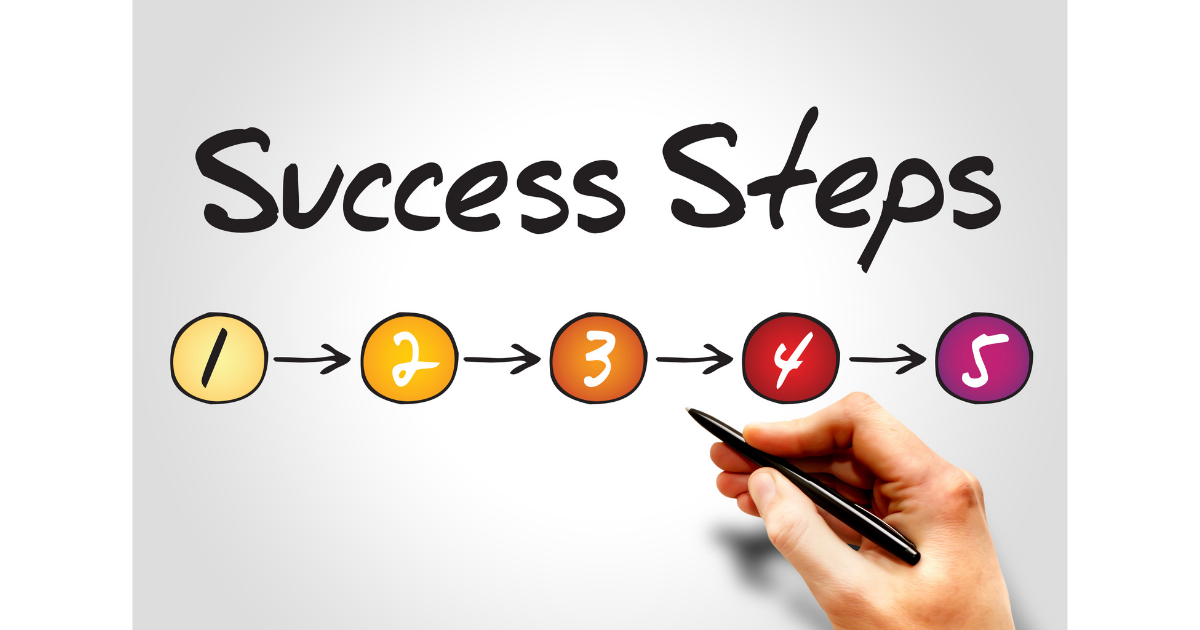
Building an ecommerce website can seem daunting, but following these five easy steps can simplify the process. First, highlight your top-selling products, new items, and deals on your homepage to attract customers. Second, use shipping integration to print shipping labels directly from your dashboard. Third, automatically sync online and in-person orders, items, and inventory. Fourth, ensure your website is mobile-friendly and looks great on all devices. Fifth and finally, test your website before launching it to the public.
This guide will walk you through everything you need to know about building an ecommerce website so that you can start selling online. Building an ecommerce website used to be a difficult and expensive process, but thanks to modern ecommerce platforms like Shopify, it’s now easier and cheaper than ever before. In this guide, we’ll discuss the basics of setting up an ecommerce website, including choosing the right platform, designing your store, adding products, and setting up payment processing.
Step 1: Choose a name and get your domain
A good and free domain name should reflect your brand. If you’re selling a product, put the keyword or key phrase in your free domain name to find success.
Custom domain names typically cost between $12 and $25 per year. You may be able to get a free domain with your ecommerce platform purchase.
To perform a custom domain name search, head to one of these three website options: GoDaddy Website Builder, Namecheap, or 1&1 IONOS. These websites will list the different names used for your website before you choose an option.
You can also use Hover or Bluehost for purchasing a custom domain privacy.
Step 2: Pick your ecommerce platform
There are many options for ecommerce platforms. You can go with a dedicated ecommerce platform like Wix that lets you build unlimited sites or build your site on an existing free site builder.
If you’re looking for insider tips and step-by-step guidance, check out Wix’s website. There, you’ll find tutorials on creating an online store with Wix – from choosing a template and adding products to setting up payment gateways and shipping methods.
You can either continue using the theme you chose in Step 1 or change your mind and proceed with another one. If you choose another theme, just follow the same steps as before: go to the Themes Section under Site Settings and pick a new theme.
The course on building an ecommerce website is a great option for someone who wants to build their store with Wix. It includes detailed instructions on how to set up your shop, adds products, and configure payments and shipping – plus marketing advice so you can attract customers and make sales. Other courses include marketing and creating your online store strategy (Steps 3-5).
Click on “Continue with my active theme” to be greeted by a popup at the end of this guide. You can now set up your WooCommerce store in five easy steps.
Step 3: Plan and build your ecommerce website
Now that you know what you need to build an online store, it’s time to start. The first step is finding a platform that’s right for your business.
There are three ecommerce platforms: Open source, SaaS, and Headless. Each type of platform offers a different level of customization and feature set. SaaS platforms offer a simpler website design experience with fewer options and less customizability.
Open source platforms can be a great option if you want to take a hands-off approach or opt for an easier platform.
Open source platforms are more flexible because they don’t require a headless commerce offering. You can find open-source ecommerce options through communities such as BigCommerce, Magento, WooCommerce, and Shopify.
To build an ecommerce site, you don’t need to know code. With the help of a platform like Shopify, it’s easy to make beautiful websites without knowing how to code.
Once you’ve chosen your platform, it’s time to start building your website! Many resources can help build an ecommerce website from scratch, including tutorials and guides on platforms such as Shopify or WordPress Hosting.
Ensure your ecommerce website supports all the most popular payment methods. Ensure you have support for a full range of shipping options and pricing. Make sure it has built-in analytics that is easy to use and make it easy to see how your site performs on social media platforms such as Facebook or Instagram.
Step 4: Set up payment, tax, shipping, and marketing tools
Now that you have set up your ecommerce website, it is time to set up payment gateways and shipping options. In addition, tax calculations must be handled within the system. Some solutions offer automatic handling of tax calculations by integrating with third-party services like business-to-business portals or tax agencies.
BigCommerce and Shopify are two platforms that offer robust built-in marketing tools. These tools make it easier to build a website and market it on social media to increase sales. Other ecommerce websites require some work to use marketing features, but they are still relatively easy to set up.
Using dedicated ecommerce platforms will save you time, effort, and money. Additionally, there are free plugins for connecting WooCommerce to MailChimp and other marketing tools. Paid plugins can connect your products with social media accounts for social commerce.
Step 5: Test and launch your ecommerce website
Now that your ecommerce website is complete, it’s time to test it and launch it!
The best way to do this is by processing a few test orders. This will help you ensure the checkout process is working properly and that customers can complete their purchases without problems.
Once you’re confident that your website is ready for launch, notify your customers about the new store and start taking orders. It may take some time for sales to pick up your new website, but don’t give up! With a little hard work, you can make your ecommerce store successful.
To get your new ecommerce store indexed by search engines, verify it in Google’s Search Console. This will ensure that potential customers can find your site when searching for products or services similar to what you offer.
Social media can be used to advertise when the website is live. You can create posts on Facebook, Twitter, and other platforms announcing the launch of your new online store.
Make sure to link to your ecommerce website on all of your company’s marketing materials, such as business cards, stationery, and email signatures. This will help promote the site even further!
- How to Build A Successful and Competitive Ecommerce Website - November 20, 2022
- How to Use Dropshipping Fulfillment to Grow Your Business - June 20, 2022
